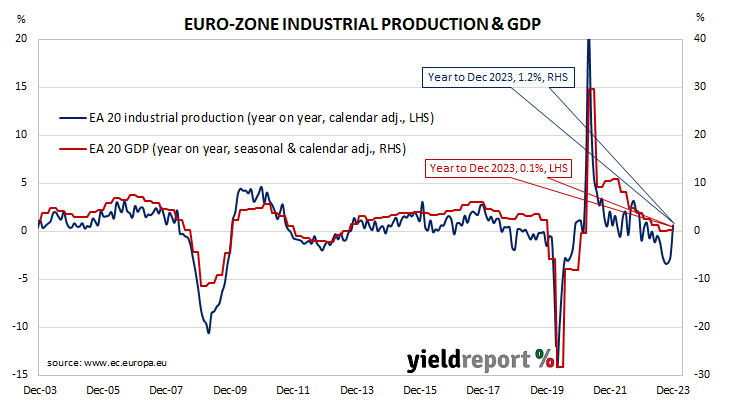Euro-zone industrial production up 2.6% in December, contrasts with expected modest contraction; up 1.2% on annual basis; German, French 10-year yields down noticeably; output contracts in two of four largest euro economies; December quarter GDP flat, up just 0.1% on annual basis.
Following a recession in 2009/2010 and the debt-crisis which flowed from it, euro-zone industrial production recovered and then reached a peak four years later in 2016. Growth rates then fluctuated for two years before beginning a steady and persistent slowdown from the start of 2018. That decline was transformed into a plunge in March and April of 2020 which then took over a year to claw back. Production levels in recent quarters have generally stagnated in trend terms.
According to the latest figures released by Eurostat, euro-zone industrial production expanded by 2.6% in December on a seasonally-adjusted and calendar-adjusted basis. The jump contrasted with the expected 0.2% contraction and it was much greater than November’s 0.4% increase. On an annual basis, the expansion rate increased from November’s revised rate of -5.4% to 1.2%.
German and French sovereign bond yields both fell noticeably on the day despite the figures. By the close of business, the German and French 10-year bond yields had both shed 7bps to 2.33% and 2.82% respectively.
Industrial production contracted in two of the euro-zone’s four largest economies. Germany’s production fell by 1.2% over the month while the comparable figures for France, Spain and Italy were +1.1%, -0.4% and 1.1% respectively.
The report came out at the same time as the latest euro-zone GDP figures. December quarter GDP growth was flat and up just 0.1% for the full year.


